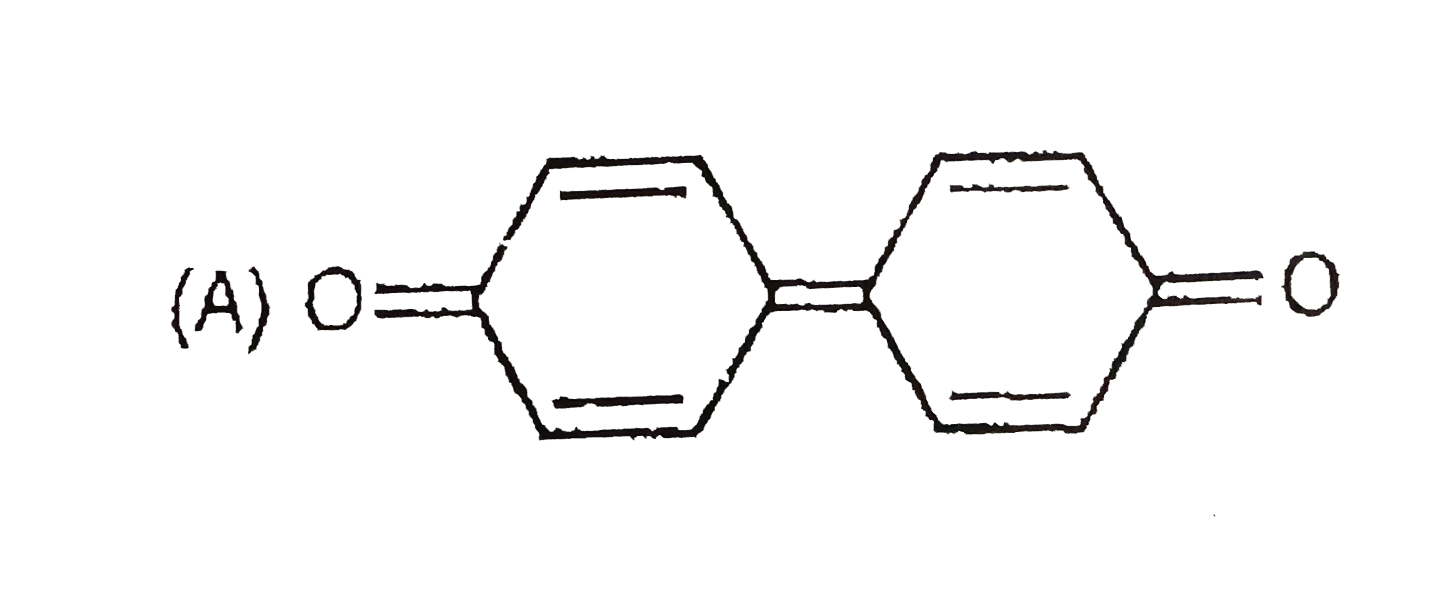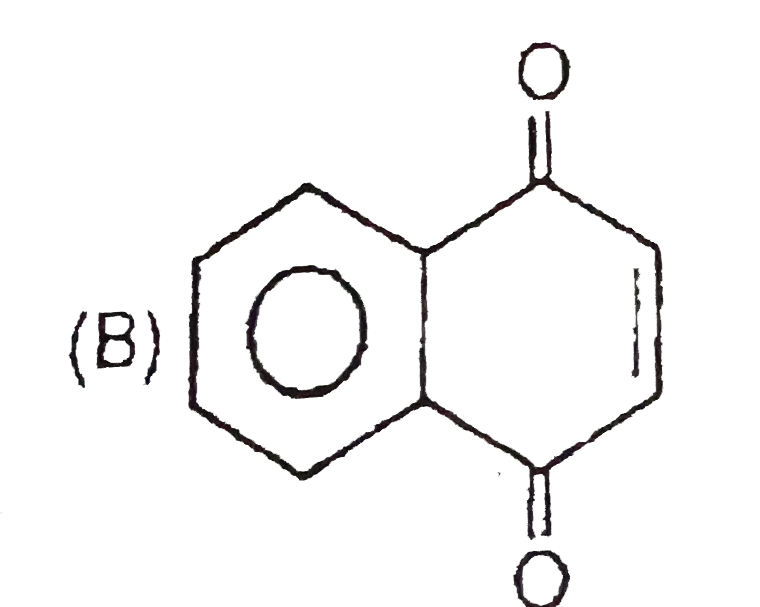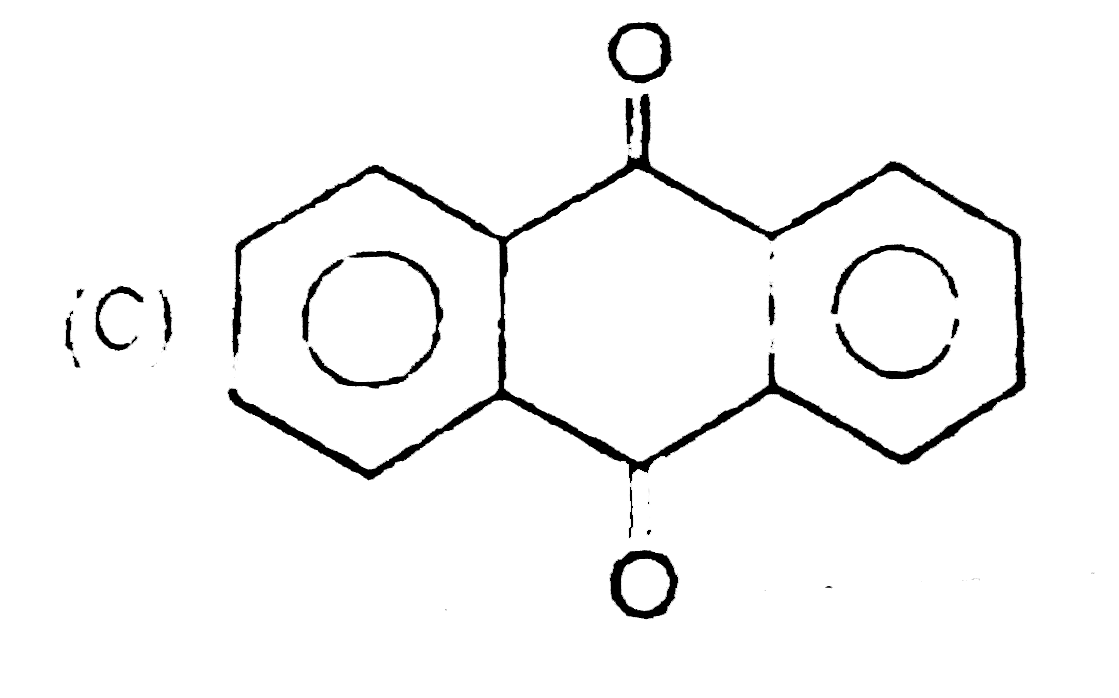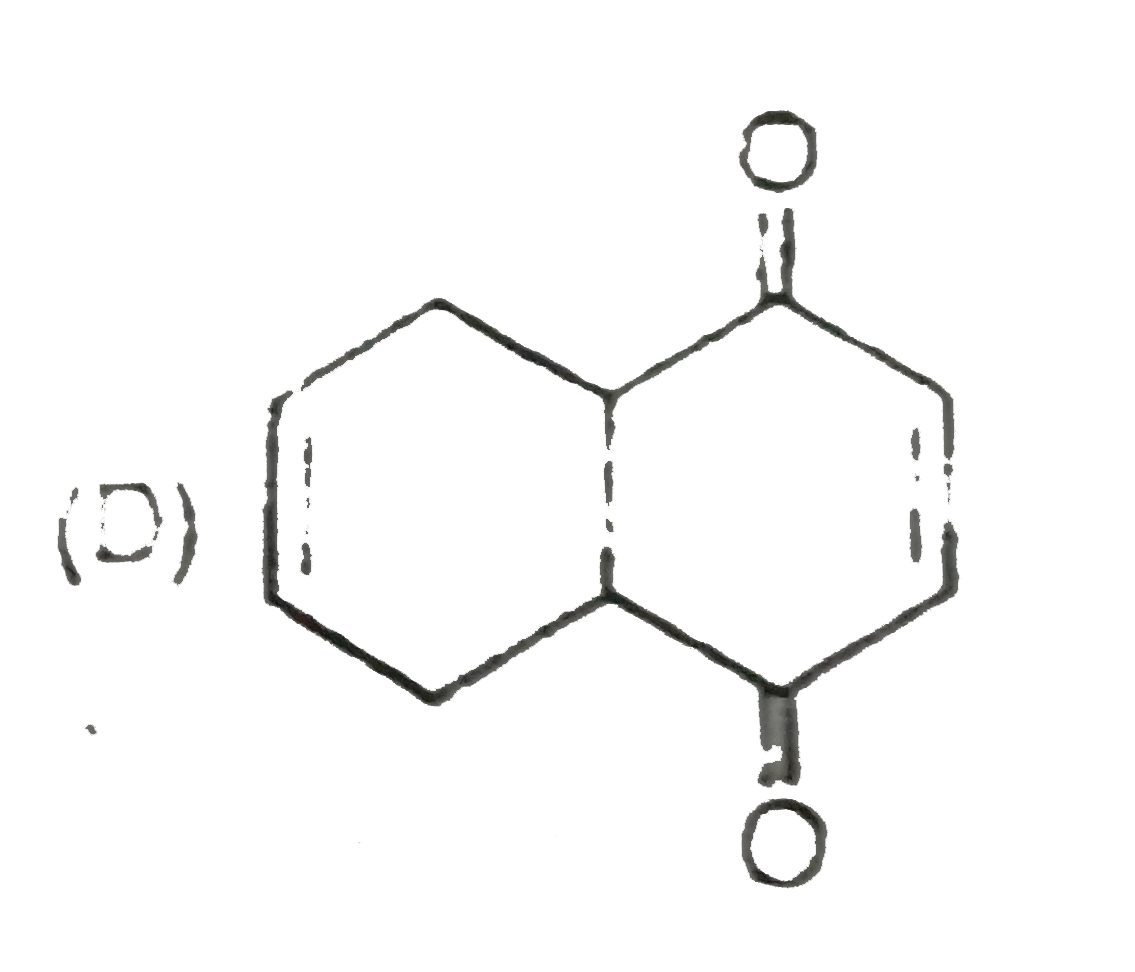Which of the following shows tautomerism ?
Benzophenone
Benzaldehyde
Di-tert butyl ketone
None of the above
The correct Answer is:D
To determine which of the given compounds shows tautomerism, we need to analyze each option based on the presence of alpha hydrogen atoms. Tautomerism typically involves the migration of a hydrogen atom from one position to another, resulting in the formation of a keto form and an enol form.
1. Understanding Tautomerism:
- Tautomerism is a type of isomerism that involves the migration of a hydrogen atom, typically from an alpha carbon to a carbonyl oxygen, leading to the formation of two isomers: a keto form and an enol form.
2. Identifying Alpha Hydrogen:
- Alpha hydrogen is defined as the hydrogen atom attached to the carbon adjacent to the carbonyl group (C=O). For a compound to exhibit tautomerism, it must have at least one alpha hydrogen.
3. Analyzing Each Option:
- Option 1: Benzophenone-1
- Structure: C6H5-C(=O)-C6H5
- Analysis: The carbonyl carbon does not have any hydrogen atoms attached to it, and the adjacent carbons (the benzene rings) do not provide any alpha hydrogens. Therefore, benzophenone-1 does not show tautomerism.
- Option 2: Benzaldehyde
- Structure: C6H5-CHO
- Analysis: The carbonyl carbon (C=O) has one hydrogen attached (the aldehyde hydrogen), but the adjacent carbon (the benzene ring) does not have any hydrogens that can act as alpha hydrogens. Hence, benzaldehyde does not exhibit tautomerism.
- Option 3: Di-tetra-butyl-ketone
- Structure: (CH3)3C-C(=O)-(CH3)3C
- Analysis: The carbonyl carbon is bonded to two tetra-butyl groups. However, the adjacent carbons do not have any hydrogen atoms available for migration. Therefore, di-tetra-butyl-ketone does not show tautomerism.
- Conclusion: Since none of the compounds have alpha hydrogens, they do not exhibit tautomerism.
4. Final Answer:
- Option 4: None of the above shows tautomerism.
- Tautomerism is a type of isomerism that involves the migration of a hydrogen atom, typically from an alpha carbon to a carbonyl oxygen, leading to the formation of two isomers: a keto form and an enol form.
- Alpha hydrogen is defined as the hydrogen atom attached to the carbon adjacent to the carbonyl group (C=O). For a compound to exhibit tautomerism, it must have at least one alpha hydrogen.
- Option 1: Benzophenone-1
- Structure: C6H5-C(=O)-C6H5
- Analysis: The carbonyl carbon does not have any hydrogen atoms attached to it, and the adjacent carbons (the benzene rings) do not provide any alpha hydrogens. Therefore, benzophenone-1 does not show tautomerism.
- Option 2: Benzaldehyde
- Structure: C6H5-CHO
- Analysis: The carbonyl carbon (C=O) has one hydrogen attached (the aldehyde hydrogen), but the adjacent carbon (the benzene ring) does not have any hydrogens that can act as alpha hydrogens. Hence, benzaldehyde does not exhibit tautomerism.
- Option 3: Di-tetra-butyl-ketone
- Structure: (CH3)3C-C(=O)-(CH3)3C
- Analysis: The carbonyl carbon is bonded to two tetra-butyl groups. However, the adjacent carbons do not have any hydrogen atoms available for migration. Therefore, di-tetra-butyl-ketone does not show tautomerism.
- Conclusion: Since none of the compounds have alpha hydrogens, they do not exhibit tautomerism.
- Option 4: None of the above shows tautomerism.
Topper's Solved these Questions
- BOOK - MOTIONCHAPTER - ISOMERISMEXERCISE - Exercise 250videos
ISOMERISM
- BOOK - MOTIONCHAPTER - ISOMERISMEXERCISE - Exercise 321videos
ISOMERISM
- BOOK - MOTIONCHAPTER - ISOMERISMEXERCISE - Exercise 426videos
ISOMERISM
- BOOK - MOTIONCHAPTER - IONIC EQUILIBRUIMEXERCISE - Exercise -4 (Level -II)14videos
IONIC EQUILIBRUIM
- BOOK - MOTIONCHAPTER - LIQUID SOLUTIONEXERCISE - EXERCISE-4 (Level-II) PREVIOUS YEAR JEE ADVANCED19videos
LIQUID SOLUTION
Similar Questions
Knowledge Check
- Question 1 - Select One
Which among the following show tautomerism ?
AAlcoholsBPhenolsCEthersDAnisole - Question 2 - Select One
Which of the following can show tautomerism ?
A B
B C
C D
D
- Question 3 - Select One
Which of the following can show tautomerism here.
AmethanalBbenzaldehydeCbenzophenoneDAcetone

